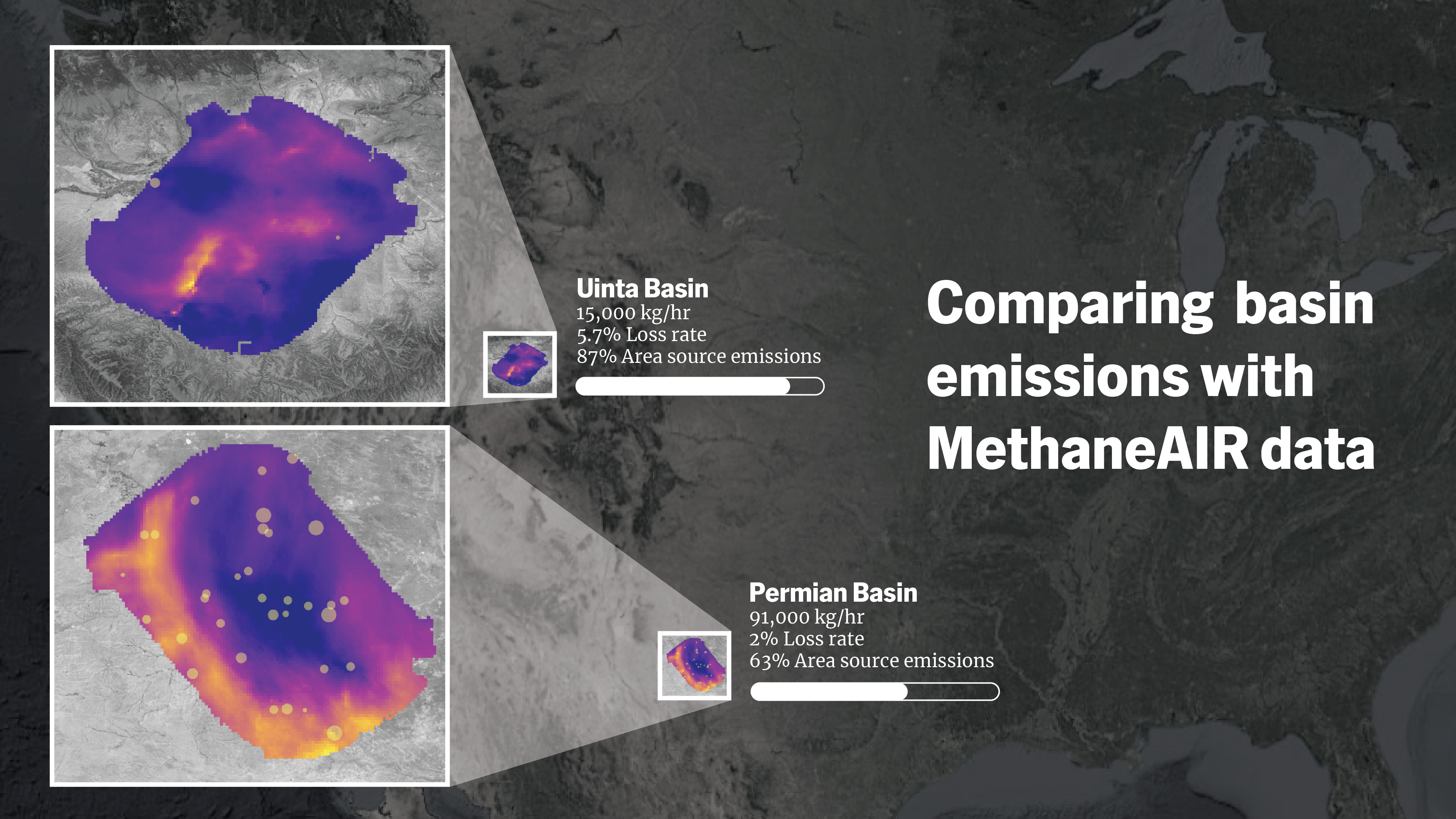PROJECT UPDATES| Data Sneak Peek: An Inside Look at What MethaneSAT Will Measure

MethaneSAT will launch in early 2024, but we have been conducting flights, testing equipment, and gathering methane data with sensors installed on jet aircraft since 2021.
These flights are designed to validate, refine and showcase our revolutionary new approach to methane detection and quantification, which allows us to see not only where methane is coming from, but also how large emissions are and how much is leaking over time – something no other satellite or aircraft can do.
The first MethaneAIR flights took place over the Permian Basin in August 2021 aboard a modified Gulfstream V owned by the National Science Foundation and operated by the National Center for Atmospheric Research. The initial flight covered over 9,000 square miles in just 2.2 hours.

MethaneAIR has allowed researchers to gather methane emissions data from oil- and gas-producing regions with greater clarity and greater speed than ever before and can quantify emissions over large areas of interest, including the basin and sub-basin level.

This capability is important because large, “super-emitting” point sources aren’t the only contributors to the overall methane problem.
A 2022 study revealed that smaller, low-producing wells are responsible for half of the industry’s methane pollution from the production sector, and therefore it is critical to quantify total emissions resulting from smaller diffuse area sources as well as high-emitting point sources which together in aggregate helps build a more complete picture of the overall emissions

By giving regulators and operators access to point source and basin-specific measurements, they can prioritize deploying solutions in the regions where methane volumes are highest.
Check out the studies below for more about how researchers are gathering data, verifying their findings and preparing for launch of MethaneSAT in 2024.
- MethaneAIR Project Overview
- Comprehensive evaluation of aircraft based methane sensing For greenhouse gas mitigation (June 2023)
- Methane Point Source Quantification Using MethaneAIR: A New Airborne Imaging Spectrometer (June 2023)
- MethaneAIR: Airborne Imaging Spectrometer Level 2 Ungridded Data (February 2023)
- Developing a spatially explicit global oil and gas infrastructure database for characterizing methane emission sources at high resolution (January 2023)
- Atmospheric Measurement Techniques: Spectral calibration of the MethaneAIR instrument (May 2021)